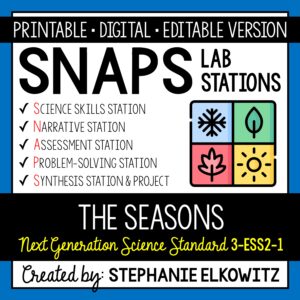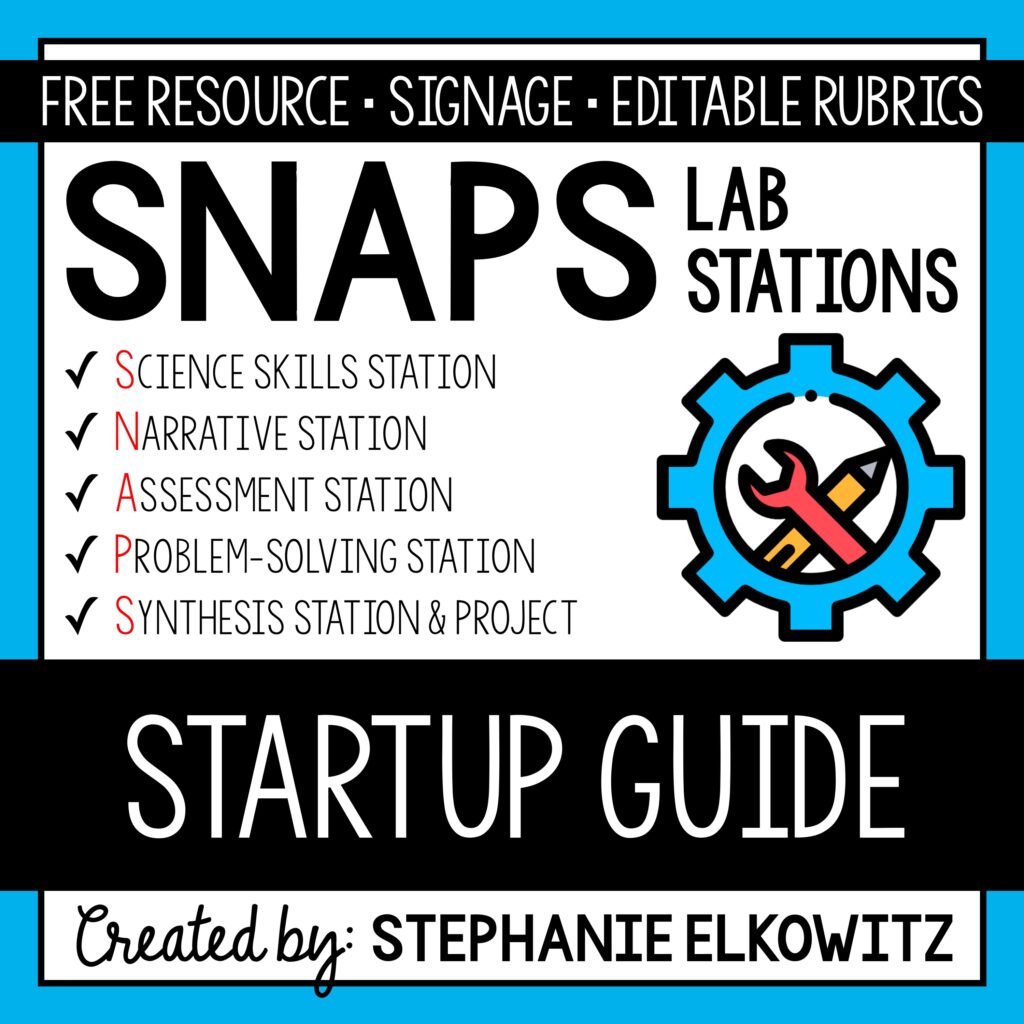

Download the FREE Startup Guide
A FREE resource that provides best practices, links to helpful videos, signage, editable and digital rubrics and documents and so much more.
Labs engage students before even stepping foot in the classroom. They include activities for exploration, explanation and evaluation. Synthesis projects allow students to elaborate on learned material.
My station labs accommodate different learning styles. They develop mastery of science content and develop science, math, literacy and problem-solving skills.
My lab skills list provides insight into the resources required for each lab. Some labs require no additional materials. The most intensive labs are designed to make preparation as easy as possible for you.
My lab activities are a “hybrid” of inquiry and station labs. They provide the thoroughness of inquiry labs with the differentiated instruction of station labs. Many station labs include eight or ten stations but SNAPs labs include five stations. By decreasing the number of stations, students spend more time at a single station and complete more rigorous and thought-provoking exercises.
At this station, students explore a concept using science and math skills. The skills may be procedural or something that a student must physically do. The skills may be mathematical or require scientific thinking and reasoning.
Students employ literacy skills important to reading and understanding a scientific text. They also use skills important to interpreting and analyzing illustrations, tables and graphs as well.
Students answer multiple choice, short answer and/or open-ended, thought-provoking questions. The questions consider Bloom’s taxonomy and require students to employ lower, mid and higher order thinking.
Students utilize problem-solving and engineering skills so to identify problems, test solutions and/or make improvements to current or proposed solutions. For most labs, students focus on one part of the engineering design process due to time restraints.
Students complete a CER – claim-evidence-reasoning – writing piece. The purpose is to give meaning to what students learned at each station and how the learned information (or data gained from experimentation) supports a scientific claim.
Students utilize higher-order thinking to complete an activity that helps summarize information learned in the lab. This facilitates “bringing it all together" and gets students thinking harder and deeper about a concept.
Access the Master Lab Skills List for important information about all my SNAPs labs:
Many labs are designed to fully support the Next Generation Science Standards. The Master Lab Skills List provides NGSS alignment and learning objectives for each SNAPs lab.
Labs may require consumable and/or reusable materials. The Master Lab Skills List provides the resources needed for each lab. All required resources are inexpensive and easy to find.
SNAPs labs are rated for their ease with distance - independent learning. Some labs are very hands-on and must be altered whereas others require minimal or no modification.

A FREE resource that provides best practices, links to helpful videos, signage, editable and digital rubrics and documents and so much more.






























I create thoughtful, rigorous and comprehensive science curricula and activities that provide meaningful learning experiences in traditional classrooms, online learning settings and for homeschooling families. Browse my store for a variety of purchasing options to meet your educational and budgetary needs.